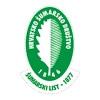
DIGITALNA ARHIVA ŠUMARSKOG LISTA
prilagođeno pretraživanje po punom tekstu
| ŠUMARSKI LIST 1-2/2007 str. 14 <-- 14 --> PDF |
M. Božić, J. Čavlović, M. Vedriš, M. Jazbec: MODELIRANJE DEBLJINE KORE STABALA OBIČNE JELE ... Šumarski list br. 1–2, CXXXI (2007), 3-12 Rondeux, J., 1997: Überblick über nationale Wal-stverwaltung Nordrhein-Westfalen. Landesfor dinventuren in Europa. In: Testlauf zur Landes-stverwaltung Nordrhein-Westfalen, pp. 8–15. waldinventur – Konzeption, Verfahrenstest, Er-Düsseldorf. gebnisse. Heft 5 Schriftenreihe der Landesfor- SUMMARY: Basic aim of research was to make correlation models that explain bark thickness of silver fir in dinaric beech – fir forests as a function of ecological and stand factors. Modeling was made by using spatial variables (altitude, terrain slope and orientation) and individual tree characteristics (diameter at breast height, tree height and age). Sample was taken by measuring given parameters of 531 fir trees in dinaric region of Republic of Croatia (Forest Administrations: Delnice, Gospić, Ogulin i Senj). Bark thickness was measured on increment cores taken at breast height by using Pressler’s increment bore. Calculating was made by MS Excel application, and modeling bark thickness by Statistica 7.1 software. Diameter at breast height (DBH), tree height, tree age and altitude were variables with highest correlation coefficients to bark thickness that proved to be statistically significant, and were therefore used in model building. Models were made using partial linear correlation method, with variables calculated both in original and logarithmic form, considering p = 0,05 as a limit of statistical significance. Determination coefficients of 8 models ranged from 62,5 % to 70,4 %, with logarithmic form variables showing on average 4 % higher values. Diameter at breast height proved to be basic variable for models, with determination coef ficient of 63 %, while additional variables increased it at most to 70 %. Therefore it is suggested to use simple model for predicting bark thickness, with DBH in logarithmic form as the only independent variable. Impact of site quality on bark thickness was also studied, emphasizing that trees in lower quality stands have thicker bark. Models obtained by this research give lower values of bark thickness compared to former studies of Bojanin (1966a, 1966b) and Klepac (1972). Calculating percentage in tree dimensions, accor 5 cding to our model 1.2, bark make 4,1 % (diameter class 97, 97,97,5 cm) to 8,1 % (diameter class 12,5 cm) of tree diameter, which i iis ss abou abouabout tt 2, 2,2,3 33 % %% lower to 1,7 % higher compared to their research. According to this study silviculture and management proved to influence bark thickness: trees in intensively managed stands have thinner bark. However this may be the result of difference in site quality of intensively managed and non-managed stands. Bark increment can also be predicted based on obtained models. According to model 1.2, bark contributes from 2,8 % (diameter class 92,5 cm). to 5,6 % (diameter class 12,5 cm) in tree diameter increment er incre ent. K e y wo rd s : bark thickness thicknessthickness, silver fir, modeling, linear correlation , silver |